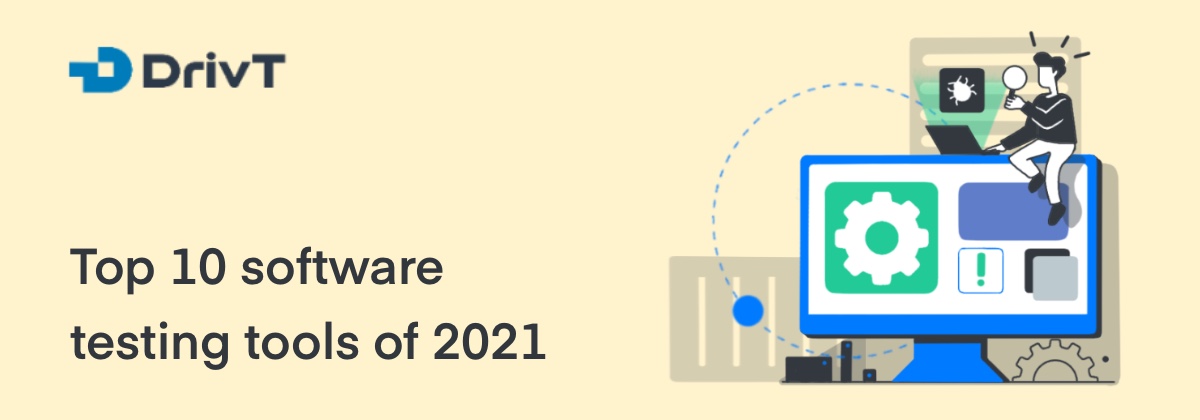An essential goal of each QA team is to release high-quality products. Keeping up with this is a demanding task: detecting and eliminating significant and minor bugs, analyzing the performance, and reporting it. Use these practices to save money and energy for more efficient QA.
QA engineer sticky notes
The quality assurance process takes a prominent place in the software development life cycle. These are common steps in QA software testing that the majority of the testers take every day, let’s take a look at them.
-
How to prepare for the testing process and make your team love you
The discovery phase is an essential part of software testing. The QA team has to be involved in the development phase. QA leads can improve the testing process simply by scheduling a sprint and letting testers give their thoughts on the development.
It might help find the right approach and make the development and testing process easy because it is quicker to change the plan than the actual product. So, find the inconsistencies in the roadmap first to save the time of both QA and developers teams.
Check the industry standards compliance. Compliance requirements of each country or the region show developers, businesses, and QA teams the things to do to release the software in the area. There is no access to the market without it.
- DIY of QA: improving the testing process
When you and your team have already started the software testing, you can still improve it. Apply the right QA tools to optimize the routine work. There is various test management software to help you with that:
- Aqua – helps medium and enterprise teams of QA engineers get better results. The solution helps to arrange and track testing outputs;
- DrivT – suitable solution for freelance testers & small QA teams to improve the testing performance. Easy-to-onboard tool with a clean UI and a free plan.
Read more on the hottest testing tools of this decade here!
- How to evaluate QA testing results and stay sane
Before starting the quality assurance process, make sure you have established the success indicators: you might not be able to determine whether you succeed or not without them!
- Requirements for the developed software;
- The quality criteria of the product release;
- QA team capabilities;
- Client’s feedback and satisfaction with the product.
Like any other niche, software development requires determining success criteria, so the testers, team leads, and managers can help release flawless products.
QA practices to get you ahead of the others
There are many approaches to refine the testing; we list the most effective practices that development teams and QA teams use to enhance the testing outcome.
#1 Good communication is crucial for the productive QA performance
Lack of communication or miscommunication can lead to financial and time losses. If the QA team did not get the list of requirements for the product release in written form and just had a conversation with the lead, there is an excellent chance of misunderstanding.
Besides, friendly team communication is crucial as well: a warm atmosphere is where the QA team can make work easy and engaging to perform. So, if you are a team lead or the person who manages other people, make sure that your team feels safe to share, knows the work evaluation criteria, and knows and follows the team communication ethics.
#2 Detailed test planning and definite deliverables are musts
Planning is the process you can not exclude in QA testing. You can meet with the team of developers and discuss the release candidates. There are always things to discuss with the developers, so plan every detail, and you will not get an unexpected outcome. First, test the features that will be the most valuable for the end-users right away.
Defined deliverables in test cases help QA testers understand if they are going to succeed or not. It is also helpful to show shareholders or clients what will be done in this or that sprint. Make a roadmap of the testing and stick to it.
It was highly essential to test location detection features in the food delivery app in COVID-19, for example. The market of software reacts to the environment, so detailed planning and events responsiveness is the key.
#3 Conduct peer reviews to enhance the teamwork
The deployment lifecycle can be exhausting, but the QA and developers team must conduct peer reviews. Team members can learn from each other and take part in the work of another person. It results in a situation of mutual respect and responsibility.
You can use the QA tools to ensure that all changes have been approved and noticed by colleagues. Also, it is helpful to keep track of all of the reviews you make and test cases you performed. You can estimate the effectiveness of implementations, see which innovations perform better and which ones you have to dismiss.
#4 Automate everything you can and enjoy the QA process
QA engineers can’t manually execute this number of test cases and check user stories as machines do. This would take weeks, and with tools, the tester can do that within one day or less. Don’t forget to automate the regression tests to get to the production stage.
One more thing – it is simpler to identify crucial mistakes in bulk than by hand, process such data, and make the right decisions. Automation speeds up the process helps to meet deadlines and complete more tasks in one sprint. What exactly QA tester can automate:
- Basic functionality;
- Repetitive test scripts;
- Load tests and performance tests;
- Regression and integration tests;
- Priority features.
There are also things that you should not automate:
- User experience;
- Early development stages;
- Functionality that has little impact;
- Testing without precise results;
- Tests that cannot be fully automated.
Automation is not just a QA trend in 2021 but the necessity to make testing cost-effective.
#5 Dig deeper into business goals and users’ behavior
Providing the best software quality is more accessible when the QA team knows the client’s business goals. Why? The testers can walk in the client’s shoes while testing, and they should do that! Knowing the target audience is not the task of a product or marketing manager solely. It is a task of a QA tester to learn what is essential for users and what is not.
Companies also can buy user behavior research and improve the performance of the QA team. Ensure that the team doesn’t mix their view on the end-users with the data they got from the marketers. Personal experience is excellent if the QA engineer has used the product itself and knows the flow.
#6 Establish a smooth workflow
A warm atmosphere helps a lot with a smooth workflow, which helps both client and tester. How to make sure that your workflow will go well?
- Always prepare a testing plan. The plan should include the scope of work of each member, the outcome, and the estimation criteria for the release;
- Make sure you know the quality requirements of the software to test and release;
- Do the functional testing. Make sure that everything works as staged in the requirements for the product;
- Regression testing is a thing. Estimate newly added functions to the existing product to make sure it works smoothly;
- Reporting is another essential thing to do. It doesn’t finalize the QA testing process – it prolongs it. Shareholders or clients have to be updated on the product quality; that is why never do the generalized reports – the more detailed test case and description you make, the better.
Write down all these points of QA best practices to improve the existing or upcoming projects.
#7 Make sure you use the proper testing tools
A lot of professionals, no matter the niche, have a deep passion for spreadsheets. QA software testing requires working with lots of data, lots of layers of information. Some love spreadsheets because they’ve been working with them for years, but there are many disadvantages to such an approach.
Various types of testing can be organized with efficient test management tools. Some of them we’ve mentioned at the beginning of the article. If you are wondering how to pick the right one, here are some tips:
- The tool has to integrate with solutions you already work with (Jira, Slack, etc.);
- It should have some storage and the ability to edit test cases. Also, it must include the import of test cases;
- Clean UI (it is pleasant to work with user-friendly software);
- Spaces for all the QA and development team members;
- You need to have an option to distribute tasks and assign them to different engineers;
- You have to obtain reports, metrics, statistics quickly;
- Installation, implementation, and support of the tool have to work flawlessly.
#8 Knowledge is power or never stop learning
The QA niche is growing, changing, so the tricks you learned five or a year ago will work differently or will not work at all, which means constant learning is the solution.
There is lots of online educational content now, the content that QA engineers can find easily on Youtube. There are also many professional online courses to look at, websites to read, and tools to test. Let’s take a look at some QA educational resources.
- Edureka Youtube channel. The resource explains the basics of QA, but the most pleasant thing about the channel is that it also focuses on marketing. QA engineers have to know how to create the user’s journey and understand the target audience. The resource might be helpful both for technical and marketing purposes.
- Coursera educational materials. There are many courses on QA at Coursera; depending on your professional level, you can choose the one to get involved in. Software Testing and Automation Specialization talks about writing functional tests, critical differences between verification and validation.
- Udemy courses are also something you can learn from. They have pretty good choices there: marketing, technical, or management angles at QA are available. They start from $10, so the course is an affordable solution to improve QA skills and knowledge.
Final thoughts on QA testing top practices
Software testing is a process of creating perfect release out of imperfections. To perform the task correctly, the QA team has to work in sync and follow the strategy of the QA lead.
The first thing to know for a successful test is that QA engineers have to do a lot of digging on a topic, preparing a plan, learning the compliance requirements, and performing the testing. Reporting is another considerable part of the process, so keep track of the tickets, focus on the analytics more and try some of our best practices to get the most out of the testing process.








Be the first to leave your comment...